In Part One of Eyewitness to Mopar® Muscle Car History, we introduced you to Martyn Schorr, a renowned automotive photojournalist who covered the dawn of the high-performance car phenomenon and followed it to its downfall in the late 1970s, and rebirth during the 1980s. One of Martyn’s first features on a Chrysler product wasn’t a muscle car but something completely different, futuristic and experimental. “One of the truly unique Chrysler cars I had the privilege of driving early on in my career didn’t have a ‘big’ engine and looked like nothing else that the factory was building. And you couldn’t buy one! It was the Ghia-bodied ’63 Turbine car, and the one I drove was the only one of the 55 built-in 1963 and 1964 that wasn’t painted Turbine Bronze,” said Martyn.

As Martyn continues, “On May 14, 1963, I slipped behind the wheel of the white prototype at the New York City Turbine Press Preview at Roosevelt Raceway, and I was confused. It wasn’t the well-organized dash and luxurious appointments that baffled me. Nor was it the engine’s whine, rightfully sounding like an airplane engine exhaling through a car’s exhaust system. It was the tach, redlined at 60,000 rpm – not 6,000. And the engine temperature gauge showed Hot at 2,000 degrees – not 200. I didn’t feel less confused when an engineer said, ‘The redline was closer to 44,500 rpm, and the normal engine operating temperature is just a little less than 1,000 degrees and it idled at 22,000 rpm,’ I felt as though I had just entered The Twilight Zone. I didn’t make any friends at the afterparty asking a Chrysler engineer, “Is there room under the hood for a 413-inch Wedge,” laughed Martyn!

But one of Martyn’s most memorable road tests was in 1964 at the wheel of a 425-horsepower 426 Max Wedge Dodge painted up in the iconic colors of the RAMCHARGERS. As Martyn tells it, “I can remember feeling like the proverbial kid in a candy factory in 1964. I was the editor of Custom Rodder and Speed & Custom (formerly Car, Speed and Style) magazines and managing editor of CARS magazine. Not only was I making a living doing what I loved, but I was able to borrow the latest and greatest performance cars from Motown. It was like Fantasy Camp for car guys. Of all the cars I borrowed that year, one stands out for delivering the ultimate pulse-quickening experience. Nothing else even came close and the encounter has been indelibly recorded on my internal hard drive.”
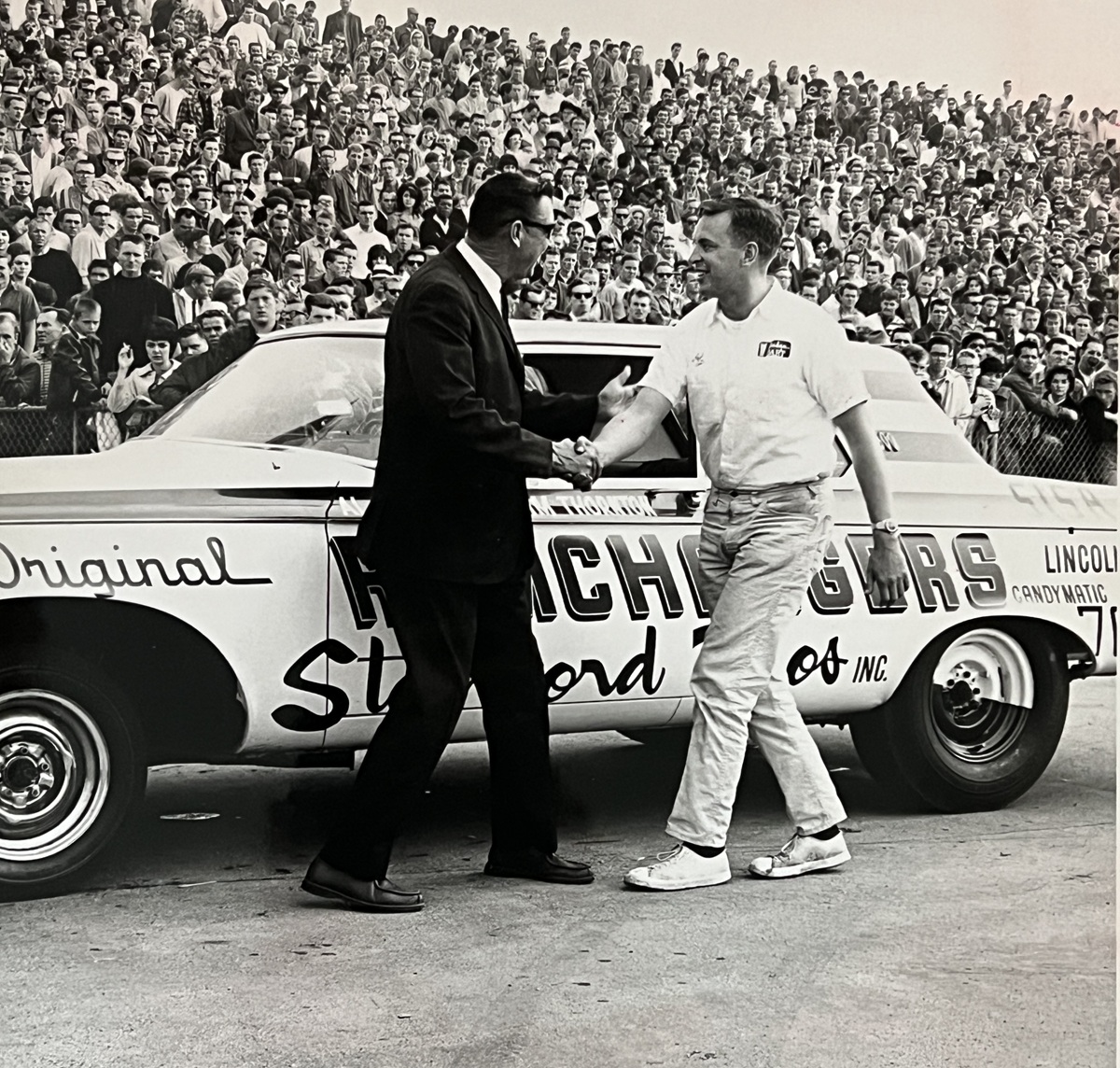
“It was early in the week of April 13, after the close of the 1964 New York International Auto Show at the Coliseum when I received a call from Dodge News Bureau’s Bernard Francis ‘Moon’ Mullins. One of the best, most creative PR operatives in the industry. He wanted to know if I’d like to borrow the Ramchargers’ S/SA Candymatic Dodge for a week or so. Somehow during all my stuttering and stammering, I managed to get a YES out. ‘Just go over to the Chrysler West Side Service Center and pick it up. Tell them I sent you!’”

The Ramchargers’ Candymatic Martyn drove through New York was not the Candymatic Dodge S/SA that won the 1963 NHRA Winternationals and U.S Nationals. That car was a Dodge ‘330’ two-door sedan and was much lighter. “I got to wheel around a 1964 Dodge ‘440’ model hardtop Candymatic. Regardless, both cars had radical and race-ready Stage III 426 Max Wedges under their hoods. The ’64 Hardtop Dodge was a backup Super Stocker for the team that served primarily as a show car. It had been on display at the New York International Auto Show at the Coliseum and before I got behind the wheel, the Teamsters racked up most of its miles driving it off the trailer and into the show,” chuckled Martyn.
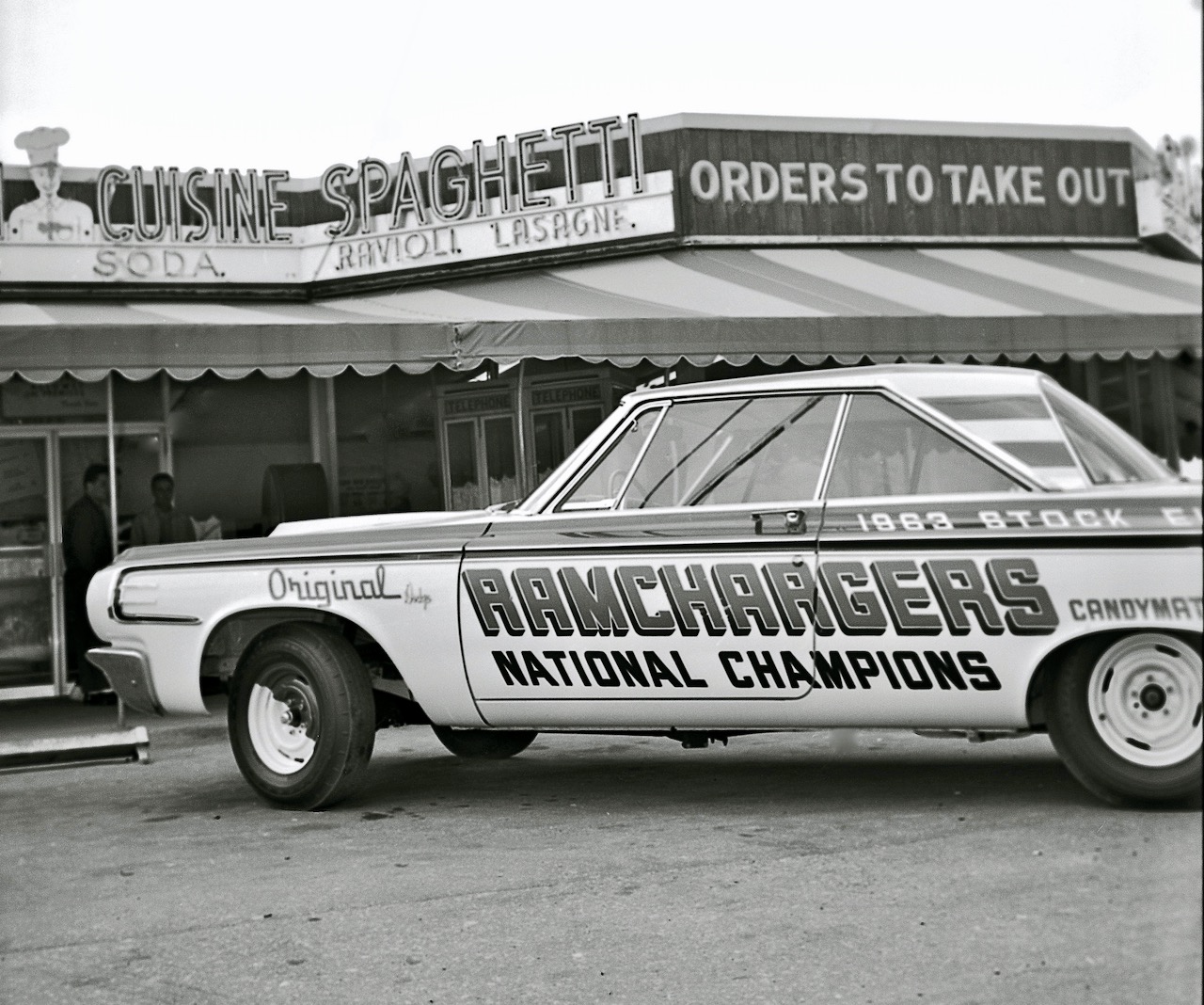
Being the consummate auto writer, Martyn picked up on the car’s less-than-friendly street manners. “One might expect that a lightened racecar powered by a 12.5-to-1 Max Wedge backed up with a bang-shift TorqueFlite and 4.56 Sure-Grip rear gears, it was less than ideal for driving around New York City, and it was. It also had jacked up torsion bars, cheater slicks and was built without insulation or sound deadeners. Being a young car guy editing enthusiast magazines, it was a dream come true! During my first drive – nine miles from Chrysler’s Manhattan West Side Service Center to my apartment in Forest Hills, Queens – I was overwhelmed by endless detonation, multiple carburetor flameouts and stalling. I sweated profusely because the heat was coming through the non-insulated firewall. The solid-lifter 426 Max Wedge had to idle between 1,500 and 2,000 rpm, and low-end performance left a lot to be desired. Once I got it over 3,500 rpm with my foot planted on the accelerator, the tach hit around 6,500 rpm in what felt like nanoseconds and the Dodge’s racecar cred exploded,” recalled Martyn.
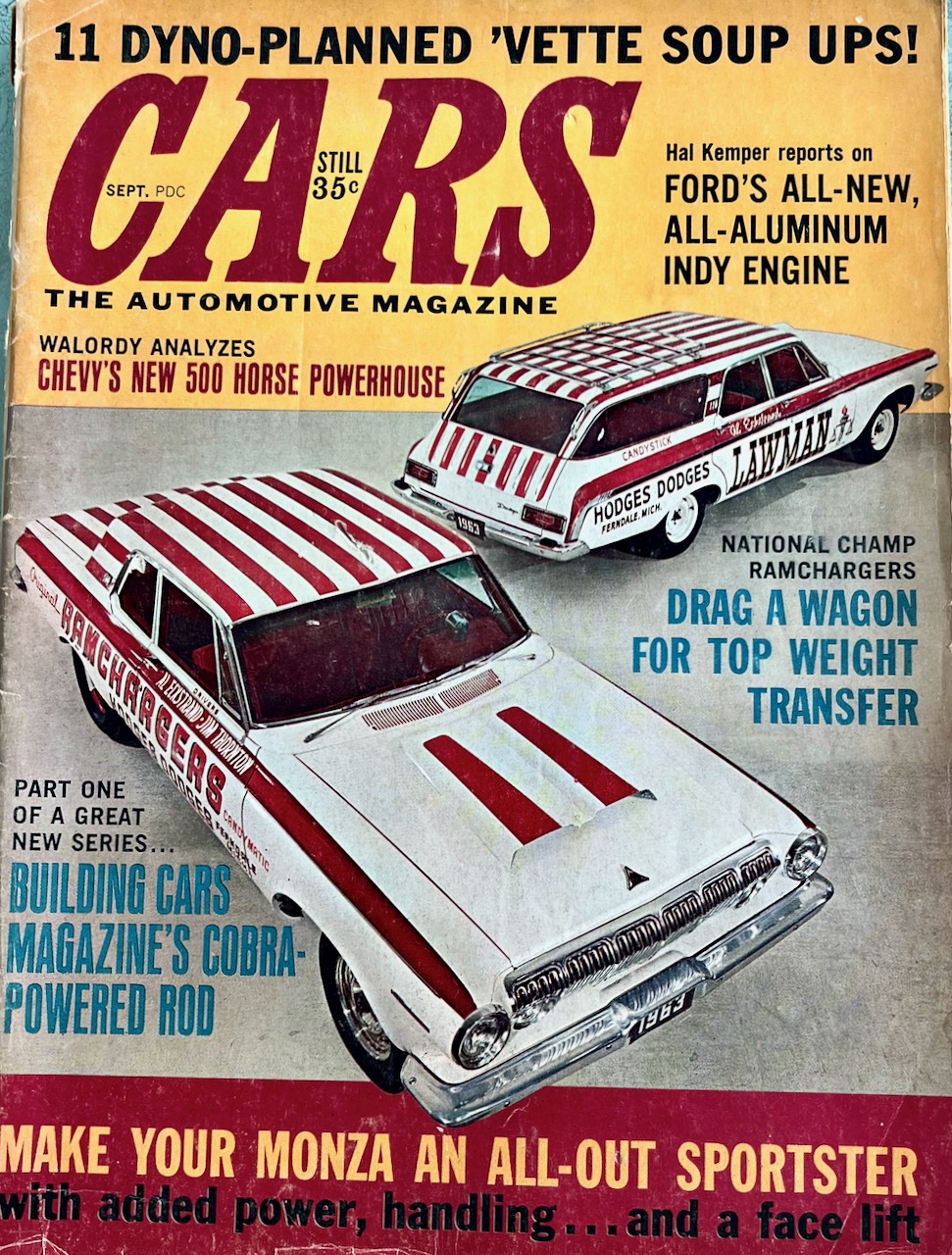
But there were other idiosyncrasies with the Candymatic Dodge Martyn had to contend with and eventually addressed. “I had a friend, Bill Howell, who owned a local Speed Shop, take it for a spin. We discovered the valves were lashed too tight, the ignition timing was way off, and the spark plugs were the wrong heat range. We then drained the fuel tank and refilled it with the proper 104-octane Sunoco 260,” noted Martyn. “We got the idle down to around 1,250 rpm, the flameouts were history, and throttle response was what you would expect from a 426 Max Wedge engine built by the Ramchargers. Getting it to hook up on New York’s mean streets was problematic. The Candymatic was fitted with cheater slicks that were designed for traction on a smooth, clean road surface. That ruled out New York City streets. Unfortunately, we ran out of time before we could take it to Westhampton Drag Strip to record some numbers. Because of the car’s stance, appearance and sinister exhaust note, it was not easy finding runs. It was way too intimidating. It did, however, attract a lot of interest from New York City’s Finest. I was pulled over more than half a dozen times, mostly to check what was under the hood. Even though the Dodge didn’t have a trace of yellow paint, several pedestrians hailed me, thinking it was a taxi!”

Martyn, being young and a drag racer, couldn’t resist doing some street racing antics. “Before having to return our candy-striper, I managed to spend one Saturday running on Woodhaven/Cross Bay Boulevard in Queens. I dusted off a few 409 Chevys, 421 Pontiacs and even a fuel-injected Sting Ray. On the Cross Bay extension heading out to the Bow Wow and Pizza City, popular street racing hangouts in Howard Beach, I met my match. An Olds-powered ’40 Willys coupe with an exposed GMC blower made quick work of me. What made it all worthwhile was beating a modified 409 Impala ragtop, three for three. After the third run, I pulled over to the side to let the engine cool. The driver of the Chevy 409 pulled up next to me and asked, ‘Are you Jim Thornton and is this the real Candymatic?’ Since Thornton and I had a lot in common – we’re both tall and he and the Ramchargers really did build the car – I answered in the affirmative. At that point, the guy’s girlfriend handed him a copy of HOT ROD, opened to a full-page Dodge Candymatic ad which he handed to me and said, ‘Do you think you can autograph it?’ to which I replied, ‘No problem.’
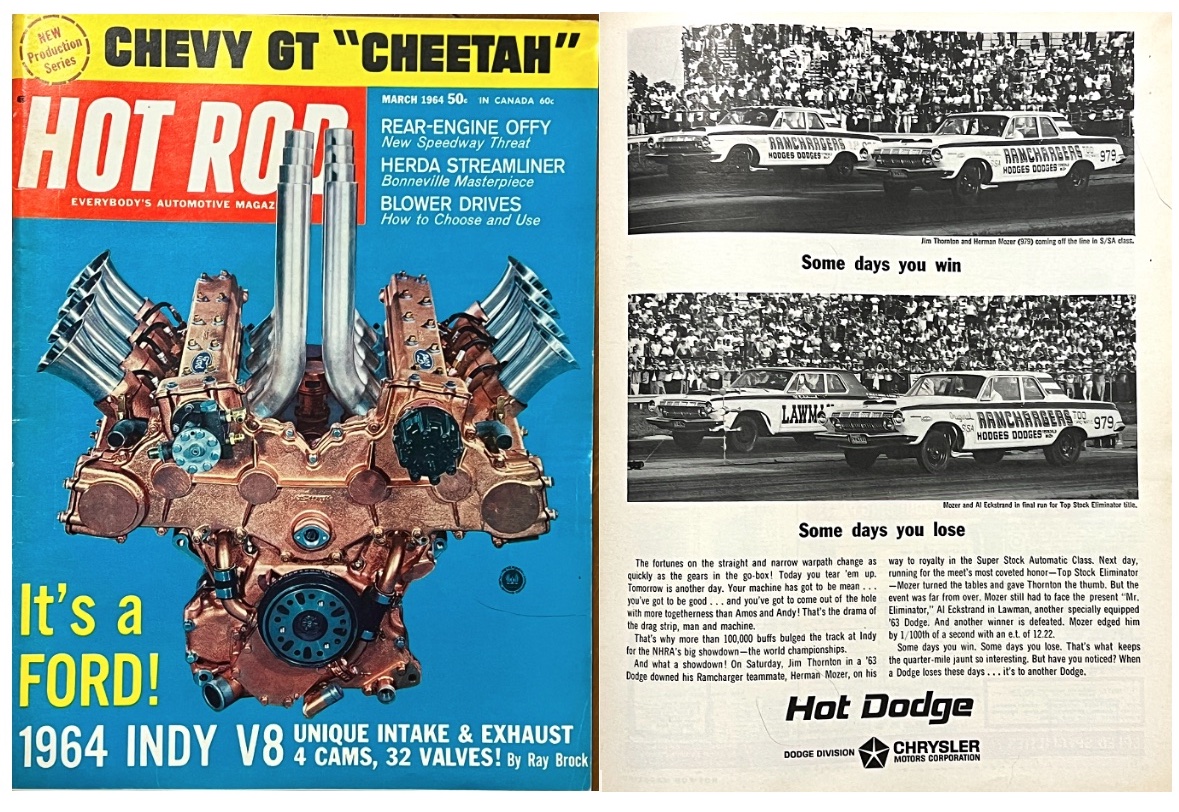
“After scrawling a barely legible Jim Thornton, I felt as though we did have something in common. The real Jim Thornton continued his winning ways and I returned to reality, driving a Royal manual typewriter!”
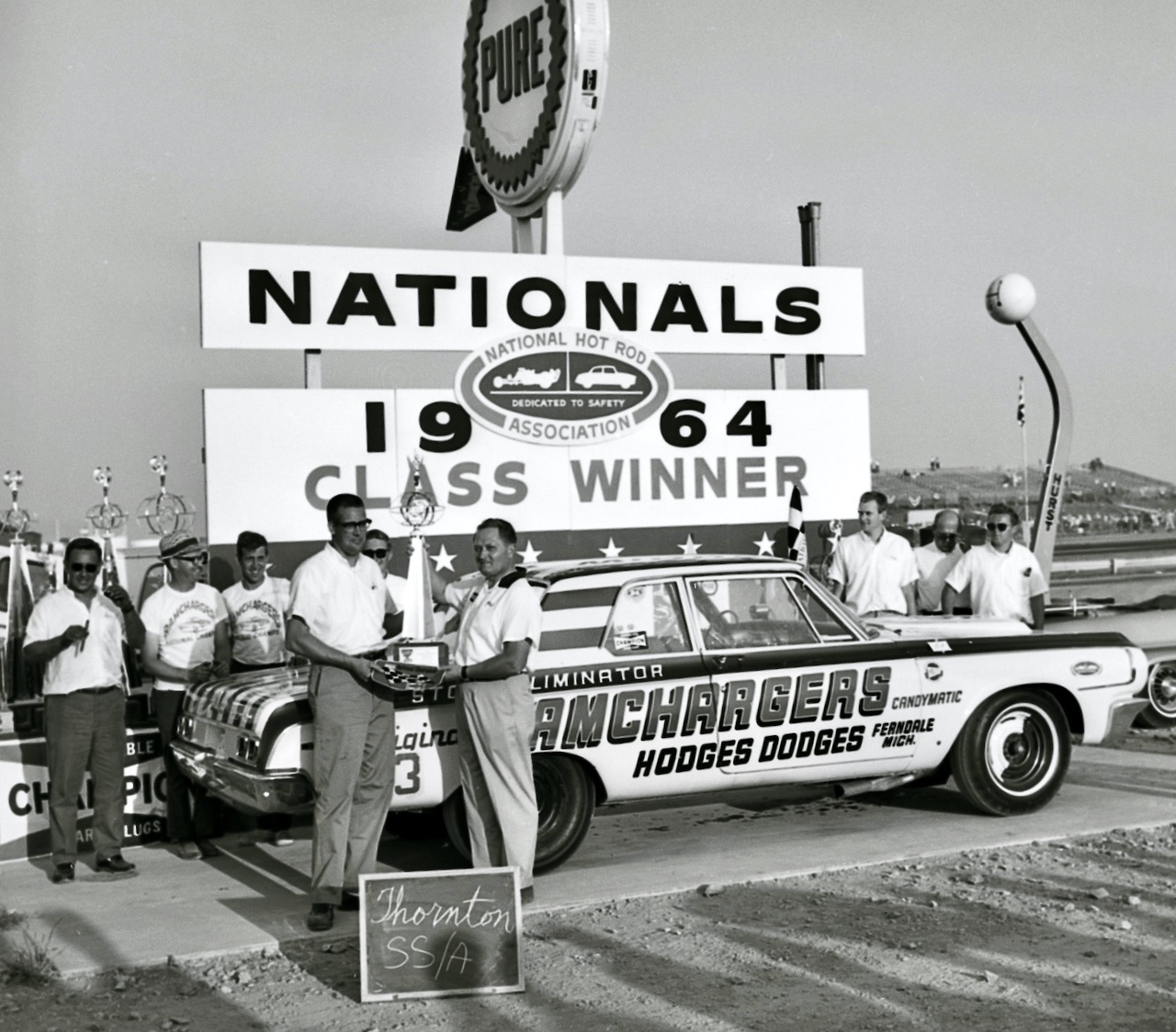
In Part Three, Martyn Schorr takes it up a notch and wrings out the all-new 1966 426 Street HEMI® engine-powered vehicle and much more as the muscle car movement ramps up!
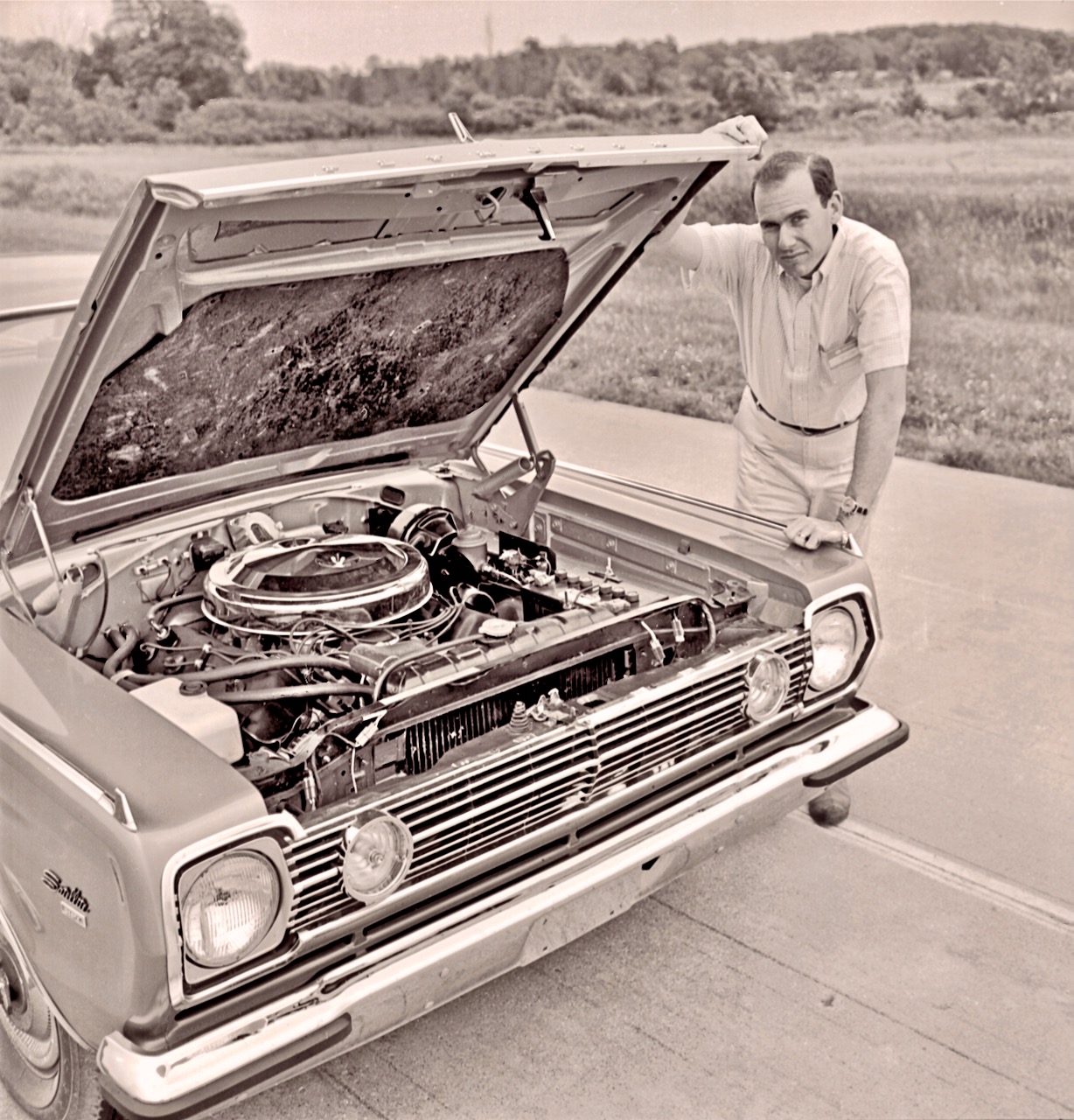
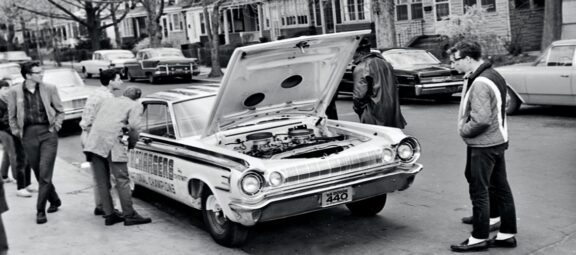
0 Comments